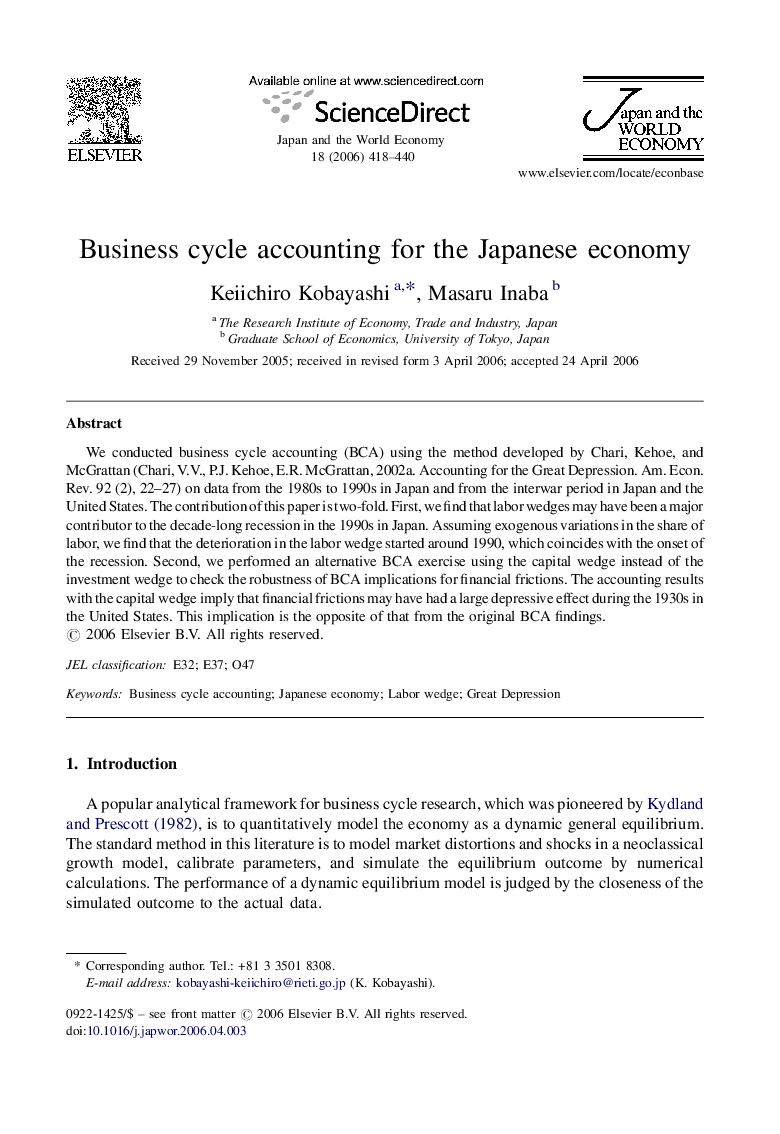| Article ID | Journal | Published Year | Pages | File Type |
|---|---|---|---|---|
| 5086414 | Japan and the World Economy | 2006 | 23 Pages |
Abstract
We conducted business cycle accounting (BCA) using the method developed by Chari, Kehoe, and McGrattan (Chari, V.V., P.J. Kehoe, E.R. McGrattan, 2002a. Accounting for the Great Depression. Am. Econ. Rev. 92 (2), 22-27) on data from the 1980s to 1990s in Japan and from the interwar period in Japan and the United States. The contribution of this paper is two-fold. First, we find that labor wedges may have been a major contributor to the decade-long recession in the 1990s in Japan. Assuming exogenous variations in the share of labor, we find that the deterioration in the labor wedge started around 1990, which coincides with the onset of the recession. Second, we performed an alternative BCA exercise using the capital wedge instead of the investment wedge to check the robustness of BCA implications for financial frictions. The accounting results with the capital wedge imply that financial frictions may have had a large depressive effect during the 1930s in the United States. This implication is the opposite of that from the original BCA findings.
Related Topics
Social Sciences and Humanities
Economics, Econometrics and Finance
Economics and Econometrics
Authors
Keiichiro Kobayashi, Masaru Inaba,
